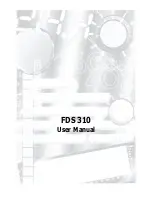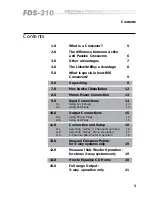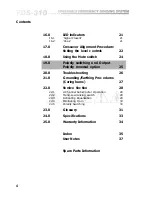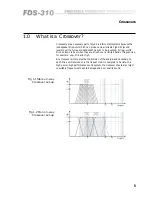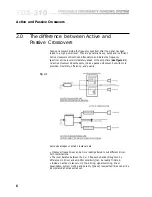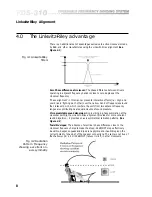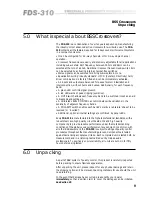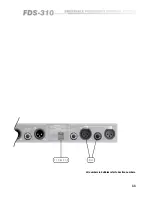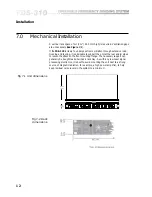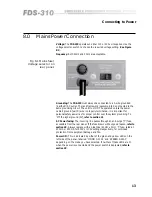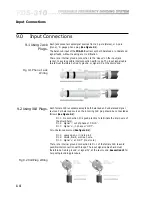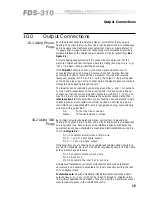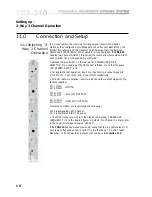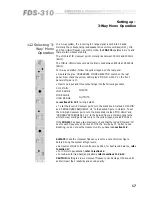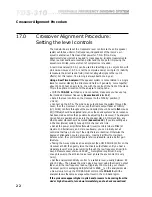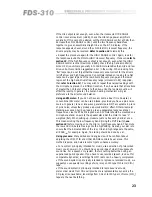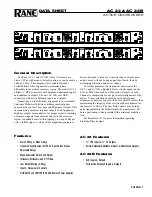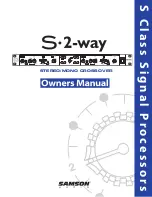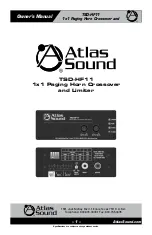
8
Linkwitz-Riley Alignment
4.0
The Linkwitz-Riley advantage
There is an additional set of advantages exclusive to active crossovers made
by BSS, and other manufactures using the Linkwitz-Riley alignment (
See
Figure 4.1
).
Fig 4.2 Radiation
Pattern Frequency
showing excellent on-
axis symmetry
Zero Phase difference at crossover:
The phase difference between drivers
operating in adjacent frequency bands is close to zero degrees at the
crossover frequency.
'Phase alignment' in this manner prevents interactive effects (i.e.: High and
Low drivers 'fighting' each other) over the narrow band of frequencies around
the crossover point, which is where the units from two adjacent frequency
ranges are contributing near equal amounts of sound pressure.
More predictable sound dispersion:
By providing in-phase summation at the
crossover point(s), the Linkwitz-Riley alignment provides for more coherent
sound dispersion - it provides on-axis symmetrical radiation patterns. (
See
Figure 4.2
).
'Invisible' slopes:
The absence of electrical phase difference close to the
crossover frequency helps to make the steep -24dB/OCT slope effectively
inaudible. Response peaks and dips are negligible and inaudible given the
correct polarity ('phasing') of the speaker connections. The same is not true of
the shallower (-6, -12 or -18dB/OCT) rates or rolloff, in other crossovers.
Fig 4.1 Linkwitz-Riley
filters
Summary of Contents for FDS 310
Page 1: ...1 FDS 310 User Manual ...
Page 10: ...1 0 Getting to know the FDS 310 Fig 6 1 Front Panel Fig 6 2 Rear Panel ...
Page 11: ...11 All numbers in bubbles refer to Section numbers ...
Page 37: ...37 User Notes ...
Page 38: ...3 8 User Notes ...
Page 39: ...39 User Notes ...
Page 40: ...4 0 User Notes ...

